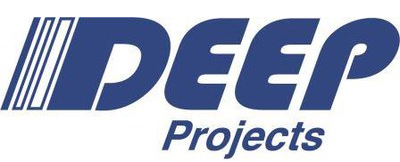
Radio Astronomy
At the present time, the world’s largest radio telescope, the Square Kilometre Array (SKA), is being developed. It will consist of hundreds of dishes and more than 100,000 antennas.
While it enables astronomers to monitor the sky in unprecedented detail, it can easily push computing requirements into the exascale domain. However, even for existing telescopes such as the LOw-Frequency ARray (LOFAR), with in the order of 50,000 antennas grouped into about 50 stations, data processing remains challenging.
In the path from antenna signal to sky image, the data undergo a long sequence of transformations: e.g., beam forming, filtering, correlations, detection of bad data (due to interference), calibration, and imaging. Within DEEP-EST, we study the computationally most challenging applications, and develop new techniques to speed up processing and increase energy efficiency.
The correlator, for example, is one of these applications. It combines telescope data in real time, as the data rates are too high to store data for more than a few seconds. We accelerate this application by using GPUs, which are well suited for this type of signal-processing tasks. So the correlator runs on either ESB or DAM:

Hardware-software co-design plays an important role. For example, we experiment with a novel GPU technology, called Tensor Cores. Tensor Cores are special-purpose units that perform mixed-precision matrix multiplications at much higher speeds than regular GPU cores. They are designed to speed up training and inference in deep-learning applications, but we apply them for signal processing purposes (e.g., correlations, beam forming). Especially on the latest generation of GPUs, the NVIDIA A100, this leads to an enormous improvement in performance and energy efficiency:


Another challenging application is the imager. The imager transforms calibrated correlations into a sky image. This application uses a novel imaging algorithm, called Image-Domain Gridding (IDG). IDG corrects for direction-dependent effects (such as ionospheric disturbance) much more efficiently than traditional algorithms, yielding higher-quality images than before. Despite the algorithmic improvements, it can still be the computationally most demanding application of the whole pipeline, hence we also accelerated this application to run on GPUs or FPGAs:

As another hardware-software co-design example, the imager runs extremely efficient on GPUs, because the ratio of multiplies, additions, sine, and cosine operations that the imaging algorithm performs, exactly matches the ratio that the DEEP-EST GPU hardware provides.
We also experiment with new FPGA technologies, such as the availability of a high-level programming language (OpenCL), hard Floating-Point Units, and the tight integration with regular CPU cores. They dramatically reduce development times (compared to programming in a traditional Hardware Description Language), and allow using FPGAs for applications that were previously deemed too complex, such as the imaging application.
We compared performance, energy efficiency, architectures, optimizations, programming models, programming effort on the DAS-5 machine for a EuroPar’19 paper:

DEEP-EST thus provides the means to explore new technologies, that will eventually result in more powerful, more energy efficient, and cheaper radio-astronomical instruments.

